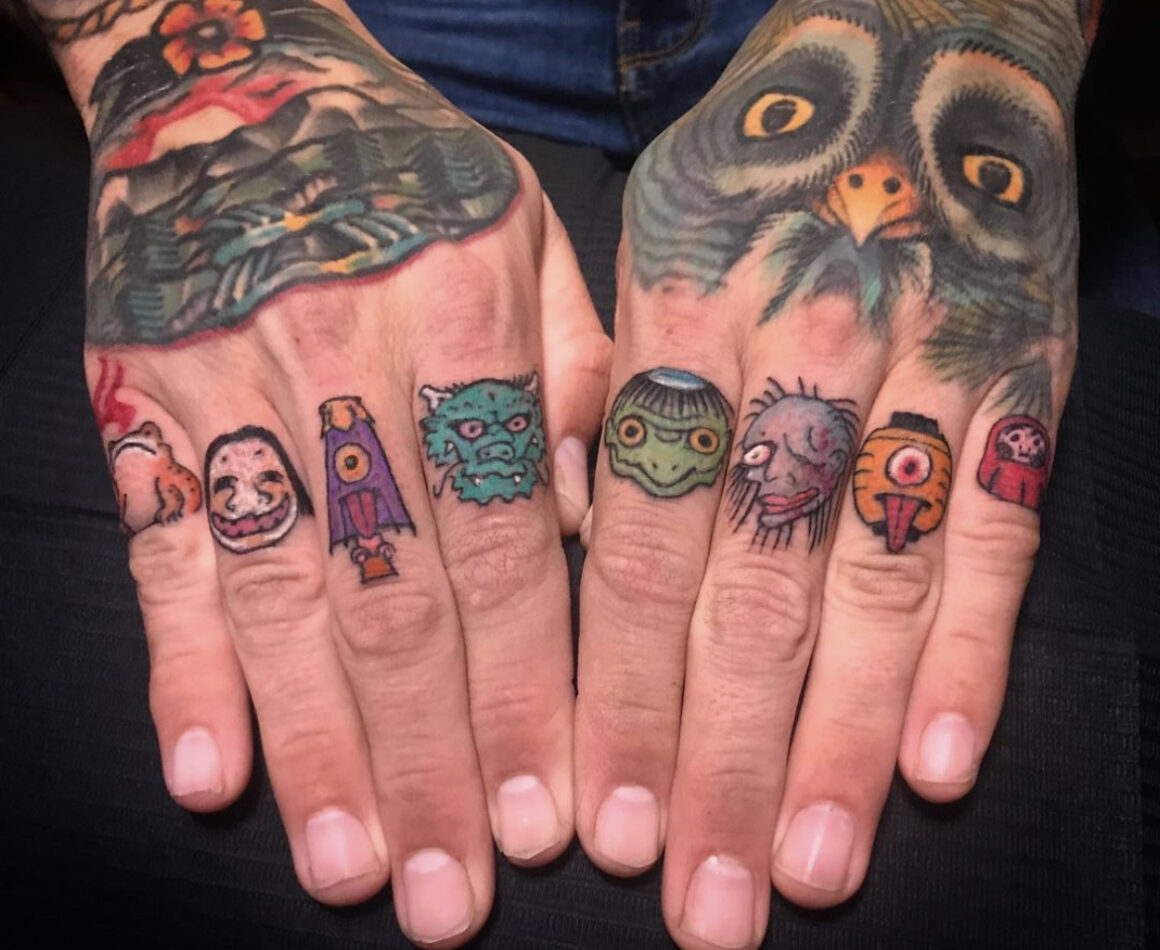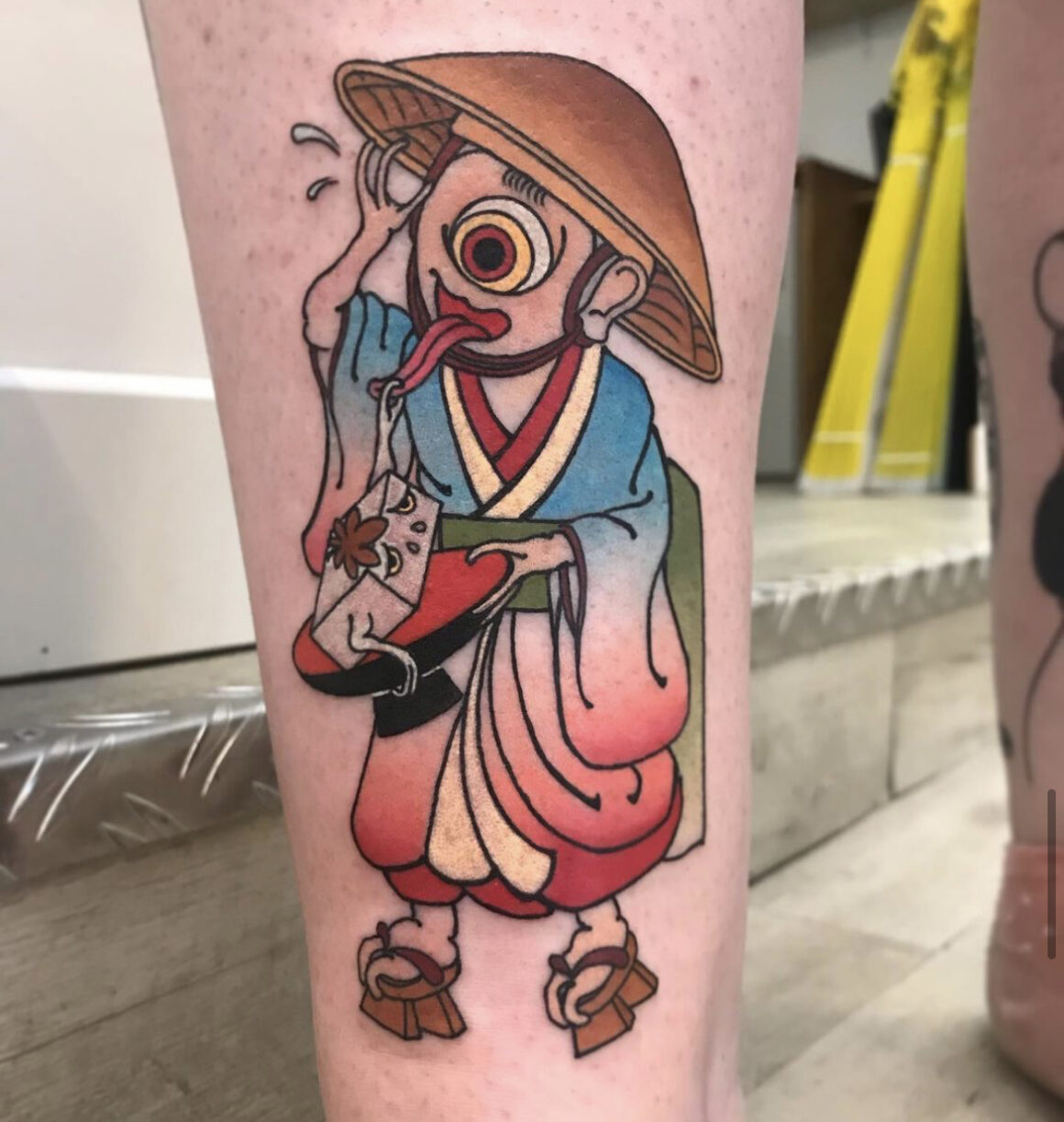There's something truly enchanting about yōkai tattoo art, isn't there? It's like stepping into a mystical world where ancient Japanese folklore meets modern ink art. These designs aren't just tattoos; they're stories etched into the skin, each one carrying centuries of cultural significance. Whether you're a tattoo enthusiast or simply someone fascinated by Japanese mythology, the world of yōkai tattoos has something to offer everyone.
But what exactly are yōkai tattoos? In short, they're traditional Japanese tattoos inspired by yōkai—supernatural creatures from Japanese folklore. These mythical beings have fascinated people for generations, and now they're making waves in the global tattoo scene. Artists and enthusiasts alike are drawn to their intricate designs, rich symbolism, and the sense of mystery they evoke.
As we dive deeper into this mystical realm, you'll discover the history, cultural significance, and the artistry behind yōkai tattoos. This isn't just about body art; it's about connecting with a culture that has thrived for centuries. So, if you're ready to explore the fascinating world of yōkai tattoos, let's get started!
Read also:Tems Hits South Africa Elaine Joins The Born In The Wild Tour
Table of Contents
- The History of Yōkai Tattoo
- Yōkai in Japanese Folklore
- Popular Yōkai Tattoo Designs
- Renowned Yōkai Tattoo Artists
- Symbolism in Yōkai Tattoos
- The Tattooing Process
- Caring for Your Yōkai Tattoo
- Current Trends in Yōkai Tattoo Art
- The Yōkai Tattoo Community
- The Future of Yōkai Tattoos
The History of Yōkai Tattoo
Yōkai tattoos have a rich history that dates back to ancient Japan. The practice of tattooing itself, known as irezumi in Japanese, has been around for thousands of years. Initially, tattoos were used for religious and spiritual purposes, but over time, they evolved into a form of artistic expression. Yōkai, with their otherworldly allure, became a natural choice for tattoo designs.
During the Edo period (1603–1868), irezumi reached its peak, with many artists creating elaborate full-body tattoos. These designs often included mythical creatures like dragons, tigers, and, of course, yōkai. The tattoos were not just decorative; they carried deep meanings and were believed to offer protection and good fortune to the wearer.
In modern times, yōkai tattoos have gained popularity worldwide, thanks to the global fascination with Japanese culture. Artists are blending traditional techniques with contemporary styles, creating stunning pieces that honor the past while embracing the present.
Origins of Yōkai in Tattoo Art
So, how did yōkai make their way into tattoo art? Well, it all started with the ukiyo-e woodblock prints of the Edo period. These prints often depicted yōkai and other mythical creatures, capturing their essence in stunning detail. Tattoo artists were inspired by these prints and began incorporating yōkai into their designs.
Over time, yōkai tattoos became a symbol of Japanese identity and pride. They represented the country's rich folklore and its connection to the supernatural world. Today, they continue to captivate people from all walks of life, proving that the allure of yōkai is timeless.
Yōkai in Japanese Folklore
Before we delve deeper into yōkai tattoos, let's take a moment to understand what yōkai are. Yōkai are supernatural beings from Japanese folklore, often depicted as mischievous or malevolent creatures. They come in all shapes and sizes, from the playful kitsune (fox spirits) to the terrifying oni (demons).
Read also:Makhadzis Heartwarming Initiative Giving Back To The Community
Each yōkai has its own unique story and characteristics, making them a rich source of inspiration for tattoo artists. For instance, the tengu, a bird-like creature, is often associated with mountains and forests. Meanwhile, the kappa, a water-dwelling yōkai, is known for its love of cucumbers. These stories add depth and meaning to yōkai tattoos, making them more than just pretty designs.
Some popular yōkai in folklore include:
- Kitsune: Fox spirits known for their intelligence and trickery.
- Tengu: Bird-like creatures often depicted with long noses.
- Kappa: Water-dwelling creatures with a fondness for cucumbers.
- Oni: Demon-like creatures often depicted with horns and wielding clubs.
Popular Yōkai Tattoo Designs
When it comes to yōkai tattoos, the possibilities are endless. Artists can create designs ranging from small, intricate pieces to large, full-body works. The choice depends on the wearer's preference and the significance they wish to convey through their tattoo.
Here are some popular yōkai tattoo designs:
- Kitsune Tattoo: Often depicted with multiple tails, these tattoos symbolize intelligence and adaptability.
- Tengu Tattoo: These designs usually feature a long-nosed face and bird-like features, representing strength and courage.
- Kappa Tattoo: Typically shown with a water-filled dish on their head, these tattoos symbolize connection to nature and water.
- Oni Tattoo: These bold designs often include horns and fierce expressions, representing protection and power.
Choosing the Right Design
Selecting the right yōkai tattoo design is a personal decision. It's important to consider the meaning behind each yōkai and how it resonates with you. Some people choose designs based on their zodiac sign or personal traits, while others opt for yōkai that represent qualities they admire.
Don't rush the decision-making process. Take your time to research different designs and consult with your tattoo artist to ensure you get a piece that truly speaks to you.
Renowned Yōkai Tattoo Artists
There are several talented artists known for their stunning yōkai tattoo work. These artists bring the mythical creatures to life with their incredible skill and attention to detail. Let's take a look at a few of them:
- Horiyoshi III: A legendary figure in the world of Japanese tattoos, Horiyoshi III is known for his traditional irezumi work, including yōkai designs.
- Shige: Based in Tokyo, Shige is renowned for his vibrant and intricate yōkai tattoos, blending traditional and modern styles.
- Horitomo: An American artist with deep roots in Japanese tattoo culture, Horitomo creates breathtaking yōkai pieces that honor the tradition while pushing boundaries.
These artists, among others, have played a significant role in popularizing yōkai tattoos globally. Their work not only showcases their talent but also preserves the cultural heritage of Japanese tattoo art.
How to Find the Right Artist
Finding the right tattoo artist is crucial for getting a high-quality yōkai tattoo. Start by researching artists whose work resonates with you. Look at their portfolios, read reviews, and consider their experience with yōkai designs. It's also a good idea to schedule a consultation to discuss your ideas and ensure you're both on the same page.
Symbolism in Yōkai Tattoos
Yōkai tattoos are more than just beautiful designs; they carry deep symbolism. Each yōkai represents different qualities and meanings, making them meaningful pieces of art. For example, a kitsune tattoo might symbolize intelligence and adaptability, while an oni tattoo could represent strength and protection.
Understanding the symbolism behind yōkai tattoos can enhance the significance of your piece. It allows you to connect with the mythology and culture that inspired the design, creating a deeper connection with your tattoo.
Personalizing Your Yōkai Tattoo
While traditional yōkai designs are beautiful, many people choose to personalize their tattoos to reflect their own stories and experiences. This could involve incorporating elements that hold personal meaning or combining different yōkai to create a unique design. The possibilities are endless, limited only by your imagination and the skill of your artist.
The Tattooing Process
Getting a yōkai tattoo is a journey that requires careful planning and patience. The process involves several steps, from designing the tattoo to the actual inking. Here's a breakdown of what you can expect:
- Design Phase: Work with your artist to create a design that suits your vision and fits your body.
- Preparation: Ensure the area is clean and ready for tattooing. Follow any pre-tattoo care instructions from your artist.
- Inking: The actual tattooing process can take several hours, depending on the size and complexity of the design.
- Aftercare: Proper aftercare is crucial to ensure your tattoo heals well and retains its vibrant colors.
Tips for a Successful Tattoo Session
To make the most of your tattoo session, here are a few tips:
- Stay hydrated and well-rested before your appointment.
- Bring snacks and water to keep your energy up during the session.
- Communicate openly with your artist about any concerns or discomfort.
Caring for Your Yōkai Tattoo
Proper aftercare is essential for maintaining the beauty and longevity of your yōkai tattoo. Follow these tips to ensure your tattoo heals well:
- Keep the area clean and avoid submerging it in water for the first few weeks.
- Apply a small amount of tattoo-specific moisturizer to keep the skin hydrated.
- Avoid direct sunlight and harsh chemicals, as they can fade the colors.
With proper care, your yōkai tattoo will remain vibrant and stunning for years to come.
Current Trends in Yōkai Tattoo Art
Like any art form, yōkai tattoo art is constantly evolving. Current trends include blending traditional designs with modern elements, creating pieces that honor the past while embracing the present. Artists are also experimenting with new techniques and styles, pushing the boundaries of what yōkai tattoos can be.
One exciting trend is the incorporation of watercolor techniques into yōkai designs, adding a soft, ethereal quality to the tattoos. Another is the use of negative space to create striking, minimalist pieces that still capture the essence of yōkai.
Predicting Future Trends
As the world becomes increasingly connected, we can expect to see more cross-cultural influences in yōkai tattoo art. Artists may draw inspiration from other mythologies and cultures, creating unique fusion pieces that celebrate diversity and creativity.
The Yōkai Tattoo Community
There's a vibrant community of yōkai tattoo enthusiasts around the world. From online forums to local meetups, these communities provide a space for people to share their love for yōkai tattoos and connect with others who share their passion.
Joining these communities can be a great way to learn more about yōkai tattoos, discover new artists, and get inspiration for your next piece. Many communities also organize events and exhibitions, offering opportunities to meet artists and fellow enthusiasts in person.
The Future of Yōkai Tattoos
The future of yōkai tattoos looks bright, with continued growth and innovation in the art form. As more people discover the beauty and significance of these tattoos, we can expect to see even more incredible designs and techniques emerge.
One thing is certain: yōkai tattoos will continue to captivate and inspire people worldwide. They are a testament to the enduring power of Japanese folklore and the artistry of tattoo culture.
Final Thoughts
In conclusion, yōkai tattoos offer a unique blend of art, culture, and mythology that resonates with people from all walks of life. Whether you're drawn to their intricate designs, deep symbolism, or the stories they tell, there's something truly magical about these


